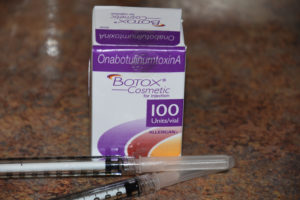
One of the features that makes for an aged or unhappy appearance is that of drooping or downturned corners of the mouth. This is partially contributed to by the weight of falling midfacial tissues, but an overactive depressor anguli oris (DAO) muscle can also play a major role. This muscle originates from the lower jawline and comes upward and inserts into the modiolus muscle as well as interconnects with other adjacent facial muscles as well. (risorius, zygomaticus and depressor labii inferiorus) The action of the DAO muscle pulls the corner of the downward.
Botox injections into the DAO muscle can help lift and level out a downturned corner of the mouth. But to be effective, its injection must be precise due to numerous muscular interconnections. In the November 2014 issue of the journal Plastic and Reconstructive Surgery, on this topic entitled ‘Anatomical Considerations Regarding the Location an Boundary of the Depressor Anguli Oris Muscle with Reference to Botulinum Toxin Injection’ was published. Using cadavers for study, they found that the modiolus was located about 1 cm to the side of the mouth corner and slightly less than 1 cm below this lateral point. The DAO muscle fans oout below the modiolus and is located less than 45 degrees lateral and less than 30 degrees medial to the modiolus down to the jawline. The authors suggest that this fan-shaped area is the safest and most effective Botox injection site.
The modiolus is the intersection of all muscles that act on the corner of the mouth. Since the DAO muscle pulls down on the modiolus, its hyperactivity can lead to drooping of the corner of the mouth. Injection of Botox into the DAO will allow for its weakening and allow its antagonists (levator anguli oris and zygomaticus major muscles) to lift up the mouth corner.
Dr. Barry Eppley
Indianapolis, Indiana


